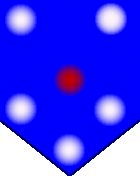
Near the end of World War I, the IJA showed an interest in armored warfare and tanks and obtained a variety of models from foreign sources. These models included one British Heavy Mk IV and six Medium Mark A Whippets, along with thirteen French Renault FT-17s (later designated Ko-Gata Sensha or "Type A Tank"). The Mk IV was purchased in October 1918 while the Whippets and Renaults were acquired in 1919.[1]
Trials with these vehicles were successful, and the IJA decided to establish an armored force in 1925, planning to form three light tank battalions and one heavy tank battalion. However, the greatest problem was equipping these units, as the Japanese did not have any indigenous tank production capability. The IJA therefore sent a mission to purchase more tanks from the United Kingdom and France, requesting newer designs. However, the newer tanks were not available as these countries had difficulties supplying them to their own armored forces, and the only available model was the older Renault FT-17. The IJA reluctantly imported these, but in 1929 they were able to acquire ten examples of its successor, the Renault NC1 (designated Otsu-Gata Sensha or "Type B Tank"). Both types of tanks were still in active Japanese service in 1940, and additional vehicles and spare parts were obtained after the Japanese occupation of French Indochina.
The IJA also purchased several Vickers 6-Ton tanks and Carden Loyd tankettes and used these as a basis for further development, resulting in tanks such as the Type 89 Chi-Ro.



























































No comments:
Post a Comment